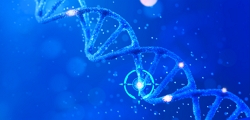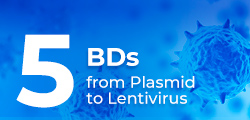-
REAGENT SERVICES
Hot!
-
Most Popular Services
-
Molecular Biology
-
Recombinant Antibody/Protein
-
Reagent Antibody
-
CRISPR Gene Editing
-
DNA Mutant Library
-
IVT RNA and LNP Formulations
-
Oligo Synthesis
-
Peptides
-
Cell Engineering
-
- Gene Synthesis FLASH Gene
- GenBrick™ Up to 200kb
- Gene Fragments Up to 3kb now
- Plasmid DNA Preparation Upgraded
- Cloning and Subcloning
- ORF cDNA Clones
- mRNA Plasmid Solutions New!
- Cell free mRNA Template New!
- AAV Plasmid Solutions New!
- Mutagenesis
- GenCircle™ Double-Stranded DNA New!
- GenSmart™ Online Tools
-
-
PRODUCTS
-
Most Popular Reagents
-
 Instruments
Instruments
-
Antibodies
-
ELISA Kits
-
Protein Electrophoresis and Blotting
-
Protein and Antibody Purification
-
Recombinant Proteins
-
Molecular Biology
-
Stable Cell Lines
-
Cell Isolation and Activation
-
 IVD Raw Materials
IVD Raw Materials
-
 Therapy Applications
Therapy Applications
-
Resources
-
- All Instruments
- Automated Protein and Antibody Purification SystemNew!
- Automated Plasmid MaxiprepHot!
- Automated Plasmid/Protein/Antibody Mini-scale Purification
- eBlot™ Protein Transfer System
- eStain™ Protein Staining System
- eZwest™ Lite Automated Western Blotting Device
- CytoSinct™ 1000 Cell Isolation Instrument
-
- Pharmacokinetics and Immunogenicity ELISA Kits
- Viral Titration QC ELISA Kits
- -- Lentivirus Titer p24 ELISA KitHot!
- -- MuLV Titer p30 ELISA KitNew!
- -- AAV2 and AAVX Titer Capsid ELISA Kits
- Residual Detection ELISA Kits
- -- T7 RNA Polymerase ELISA KitNew!
- -- BSA ELISA Kit, 2G
- -- Cas9 ELISA KitHot!
- -- Protein A ELISA KitHot!
- -- His tagged protein detection & purification
- dsRNA ELISA Kit
- Endonuclease ELISA Kit
- COVID-19 Detection cPass™ Technology Kits
-
- Automated Maxi-Plasmid PurificationHot!
- Automated Mini-Plasmid PurificationNew!
- PCR Reagents
- S.marcescens Nuclease Benz-Neburase™
- DNA Assembly GenBuilder™
- Cas9 / Cas12a / Cas13a Nucleases
- Base and Prime Editing Nucleases
- GMP Cas9 Nucleases
- CRISPR sgRNA Synthesis
- HDR Knock-in Template
- CRISPR Gene Editing Kits and Antibodies
-
![AmMag™ Quatro Automated Plasmid Purification]() AmMag™ Quatro automated plasmid purification
AmMag™ Quatro automated plasmid purification
-
![Anti-Camelid VHH]() MonoRab™ Anti-VHH Antibodies
MonoRab™ Anti-VHH Antibodies
-
![ELISA Kits]() ELISA Kits
ELISA Kits
-
![Precast Gels]() SurePAGE™ Precast Gels
SurePAGE™ Precast Gels
-
![Quatro ProAb Automated Protein and Antibody Purification System]() AmMag™ Quatro ProAb Automated Protein and Antibody Purification System
AmMag™ Quatro ProAb Automated Protein and Antibody Purification System
-
![Target Proteins]() Target Proteins
Target Proteins
-
![AmMag™ Quatro Automated Plasmid Purification]() AmMag™ Quatro automated plasmid purification
AmMag™ Quatro automated plasmid purification
-
![Stable Cell Lines]() Stable Cell Lines
Stable Cell Lines
-
![Cell Isolation and Activation]() Cell Isolation and Activation
Cell Isolation and Activation
-
 IVD Raw Materials
IVD Raw Materials
-
![Quick
Order]() Quick Order
Quick Order
-
![Quick
Order]() Quick Order
Quick Order
- APPLICATIONS
- RESOURCES
- ABOUT US
- SIGN IN My Account SIGN OUT
- REGISTER
Resources » Reference Databases » Citations Database
Services & ProductsNews & Blogs- Using Magnetism to Direct Drug Carrying Sperm to Cancerous Tumors
- Formation of flat surfaces critical in helping macrophages eat
- Scientists Successfully Turned Skin Cells into Stem Cells Using CRISPR Genome Editing
- Engineering E. coli to Fight Viral Infections
- Inducible Quorum Sensing for Behavior Modification and Cargo Delivery Analysis in Bacterial Communities
- Researchers uncovered a new approach to treating antibiotic-resistant bacterial infections
- Diabetes drug uses 3-pronged attack to reverse memory loss in mice with Alzheimer’s
- Measles Attack: Ultra-Fast Virus Detection by Peptide Libraries
For each citation that was shared on social media (LinkedIn, Facebook, or Twitter) with the “@GenScript” tag, the author will be rewarded with a $10 Amazon gift card or 2,000 GS points.Genetic and genomic studies of pathogenic EXOSC2 mutations in the newly described disease SHRF implicate the autophagy pathway in disease pathogenesis
Hum Mol Genet. 2020;Yang X, , Bayat V, DiDonato N, Zhao Y, Zarnegar B, Siprashvili Z, Lopez-Pajares V, Sun T, Tao S, Li C, Rump A, Khavari P, Lu B, .Products/Services Used Details Operation Gene Synthesis We would like to thank the Lu Lab members, Can Cenik, Cain Yam (BestGene), Molly Jia (GenScript), Su Guo (UCSF), Xinnan Wang (Stanford), Gerald Tiu (Stanford), Kotaro Fujii (Stanford), Shinya Yamamoto . Get A Quote Abstract
Missense mutations in the RNA exosome component exosome component 2 (EXOSC2), also known as ribosomal RNA-processing protein 4 (RRP4), were recently identified in two unrelated families with a novel syndrome known as Short stature, Hearing loss, Retinitis pigmentosa and distinctive Facies (SHRF, #OMIM 617763). Little is known about the mechanism of the SHRF pathogenesis. Here we have studied the effect of mutations in EXOSC2/RRP4 in patient-derived lymphoblasts, clustered regularly interspaced short palindromic repeats (CRISPR)-generated mutant fetal keratinocytes and Drosophila. We determined that human EXOSC2 is an essential gene and that the pathogenic G198D mutation prevents binding to other RNA exosome com... More
Missense mutations in the RNA exosome component exosome component 2 (EXOSC2), also known as ribosomal RNA-processing protein 4 (RRP4), were recently identified in two unrelated families with a novel syndrome known as Short stature, Hearing loss, Retinitis pigmentosa and distinctive Facies (SHRF, #OMIM 617763). Little is known about the mechanism of the SHRF pathogenesis. Here we have studied the effect of mutations in EXOSC2/RRP4 in patient-derived lymphoblasts, clustered regularly interspaced short palindromic repeats (CRISPR)-generated mutant fetal keratinocytes and Drosophila. We determined that human EXOSC2 is an essential gene and that the pathogenic G198D mutation prevents binding to other RNA exosome components, resulting in protein and complex instability and altered expression and/or activities of critical genes, including those in the autophagy pathway. In parallel, we generated multiple CRISPR knockouts of the fly rrp4 gene. Using these flies, as well as rrp4 mutants with Piggy Bac (PBac) transposon insertion in the 3'UTR and RNAi flies, we determined that fly rrp4 was also essential, that fly rrp4 phenotypes could be rescued by wild-type human EXOSC2 but not the pathogenic form and that fly rrp4 is critical for eye development and maintenance, muscle ultrastructure and wing vein development. We found that overexpression of the transcription factor MITF was sufficient to rescue the small eye and adult lethal phenotypes caused by rrp4 inhibition. The autophagy genes ATG1 and ATG17, which are regulated by MITF, had similar effect. Pharmacological stimulation of autophagy with rapamycin also rescued the lethality caused by rrp4 inactivation. Our results implicate defective autophagy in SHRF pathogenesis and suggest therapeutic strategies.,© The Author(s) 2019. Published by Oxford University Press. All rights reserved. For Permissions, please email: journals.permissions@oup.com.Keywords

-




































